American Airlines seems to have a bit more of a fighting spirit these days. They’re starting to do things. I’m not sure they’ve fully figured out the plan yet, but the first step is sometimes just doing things, clearing out the bottleneck and experimenting and reducing the internal frictions that stand in the way of making improvements.
Legendary Southwest Airlines CEO Herb Keller described ‘doing things’ as his strategic plan. If you don’t have the plan yet, getting stuff done can be the start of finding your way through the thicket, and help you figure out what’s working, what isn’t, and flesh out the full analysis.
I was the first to reveal their premium pivot, back in January. And I’m not sure the strategy is fully fleshed out yet. But it’s beginning to be. I find it helpful to review their ‘State of the Airline’ events for employees, which follow each quarter’s earnings call, and which have been regularly leaked to me for years.
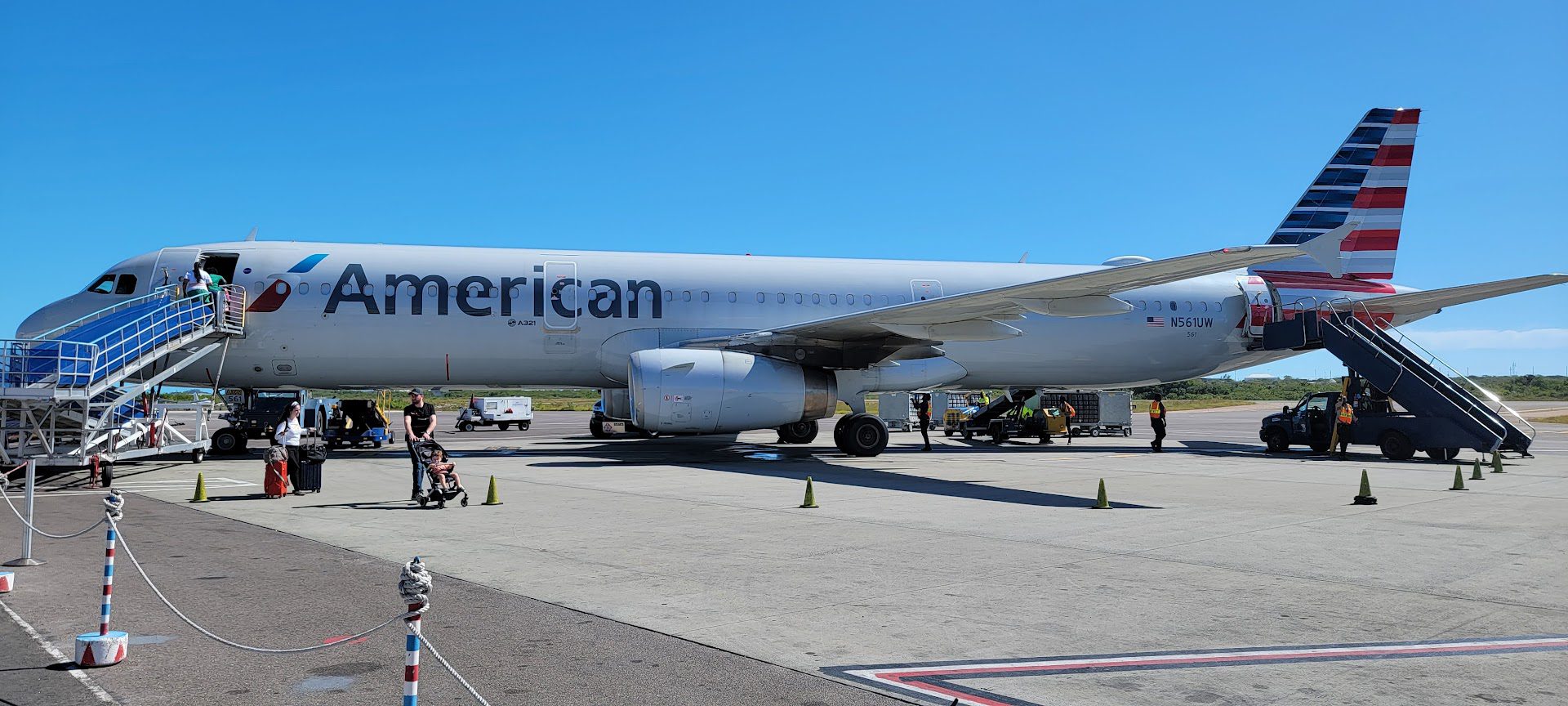
American Airlines Botched The Summer, Looks To The Future
American no longer takes live questions at these events. They ‘survey topics’ from employees in advance and say they’re addressing those. And they have senior executives on hand that employees who attend in person can speak to after the event. It’s clear that CEO Robert Isom strongly prefers to be well-practiced and not surprised.
Isom framed the airline’s third quarter loss as partly seasonal, “third quarter for us is typically not one of our stronger quarters.” CFO Devon May came back up later and contradicted this: “Third quarter traditionally has been a really strong quarter for the airline.”
Summer is peak travel! Delta points out that the airline business is becoming less seasonal. Over the past 15-20 years there’s been an accelerated trend toward earlier school year start, with over 70% of K-12 students beginning the year in August.
Chief Operating Officer David Seymour similarly added, “the summer for us, as you all know, is the most important period for this airline. It’s where we have the most opportunity, but it’s also the point in which we have the most challenges. as well that we have to deal with.”
The airline didn’t run a strong operation over the summer. Some of the was weather events (and there are always weather events). They didn’t run a strong financial business either. And early in the quarter they faced headwinds from tariff TACO and broader economy uncertainty. But Wall Street reacted well to their earnings not being as bad as expected, and that they had a plan for improving them. American’s stock remains higher than it was before the call.
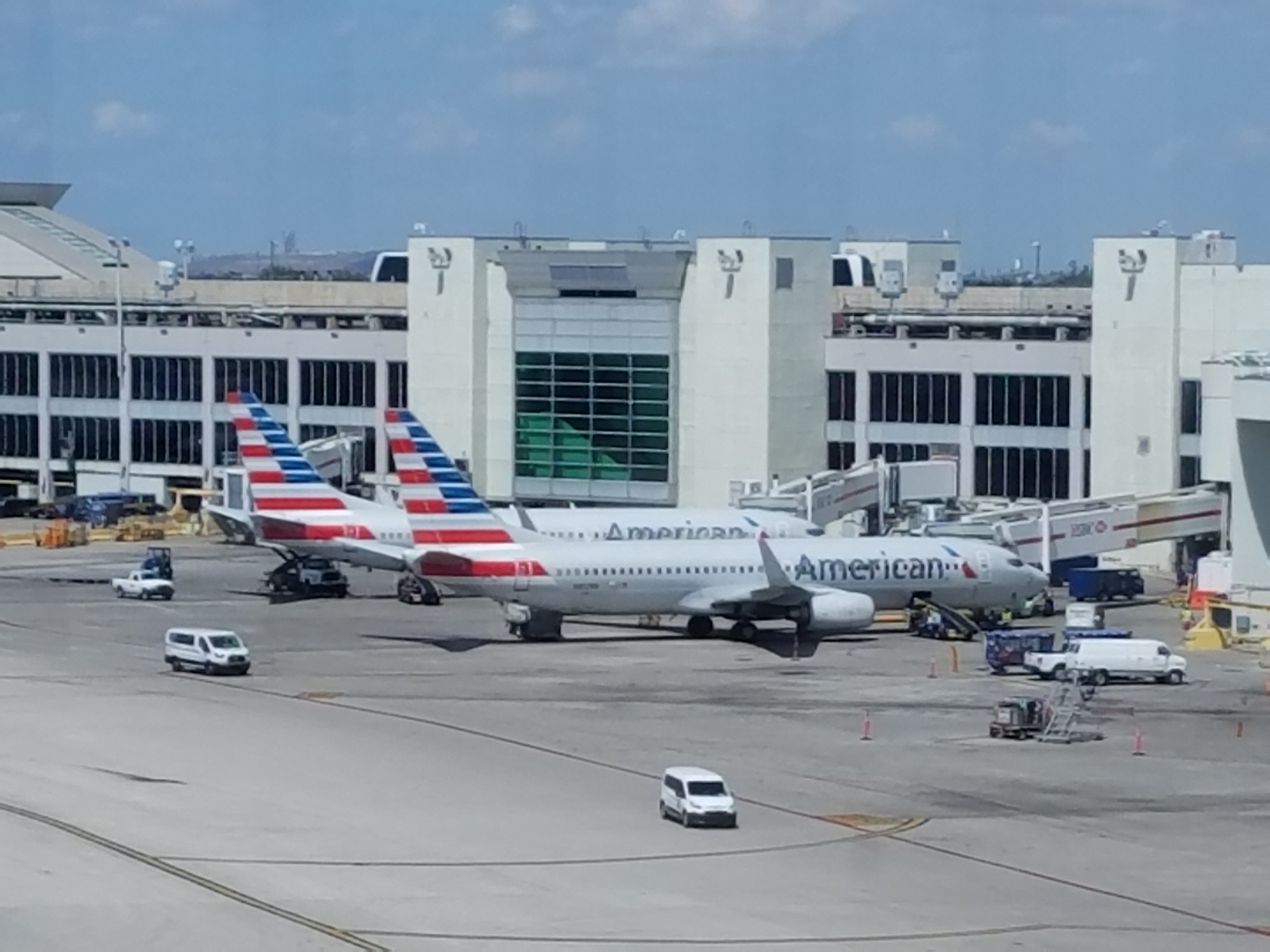
That said, in comparing American’s performance to other airlines, it’s so weird to hear Robert Isom complain so often about United’s lower labor costs. He tries to frame the positive of ‘labor cost certainty’ at American with contracts in place, but generally (1) lower costs are better, and (2) United has labor cost certainty on the upside to a pretty strong degree – their costs won’t be much higher than American’s when new contracts there are finally in place.
New Chief Commercial Officer Nathaniel Piper describes assets American has as “The global network is in place, tools and technology, and most important, committed people that want to turn this thing around.” (emphasis mine) It’s important to see this as a turnaround project, and to embrace that.
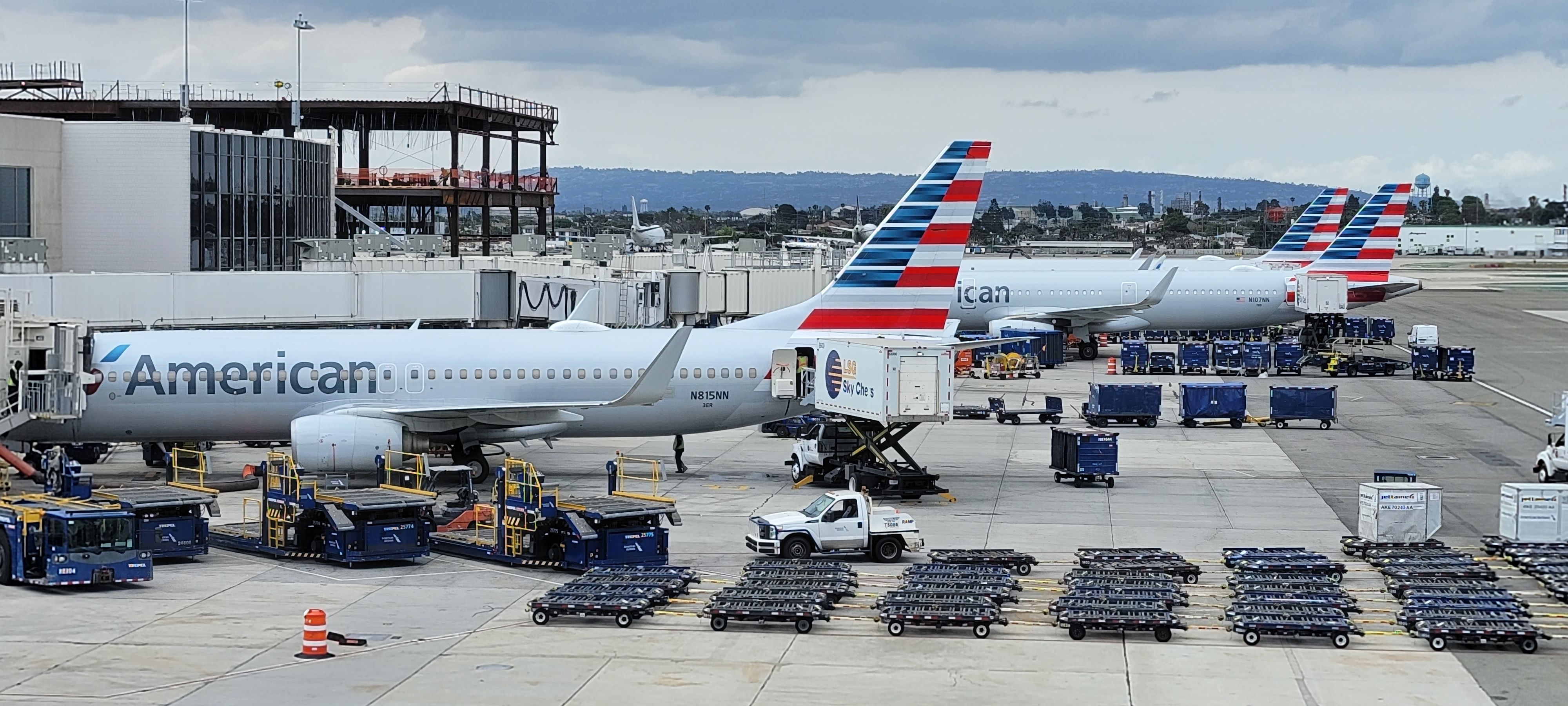
Changes To The Customer Experience
One of the biggest frustrations for customers is having their carry-on bag confiscated from them at the gate. The airline doesn’t want this to happen at the last minute, so they start demanding bags get checked even before bins fill up. And it’s even worse for a passenger to board and discover there was plenty of room, right after their belongings were taken away because ‘bins are full’ when they aren’t even full. It feels like unnecessary pain.

American says they’re gate checking 25% fewer bags. In July they said it was 10%. That’s great for customers, but it’s also not clear why this is the case.
The airline attributes it to earlier boarding, but that alone doesn’t seem to explain it. United, Delta and now Southwest have issues gate checking bags, and United and Delta already boarded when American is now starting their process. Gate agents don’t show up at the gate earlier. I need to dig in and find out what’s really going on here.

Meanwhile, david Seymour shares that One Stop Security has now expanded to all London to Dallas flights. That means connecting passengers get their passports checked as they deplane and get to skip customs and baggage claim as well as security checkpoints, heading straight to connecting flights.
Security, our government affairs team, that is we got OSS, our one stop here in DFW. We’re now at all five flights from London Heathrow to DFW right now. Our connecting customers do not just clear passport control, Don’t reclaim your bag. Don’t go through TSA.
He continues that Miami now is using facial recognition for all of their international flights:
[W]e have just rolled out our latest hub, Miami with EPP, that’s Enhanced Passenger Processing, which means essentially for a U.S. customer coming into or a U.S. citizen coming to the United States, whether you’re a global entry or not, you do not pull out your passport. It’s all facial recognition and it’s almost you don’t break stride as you go through and the customs officer welcomes you back to the United States.
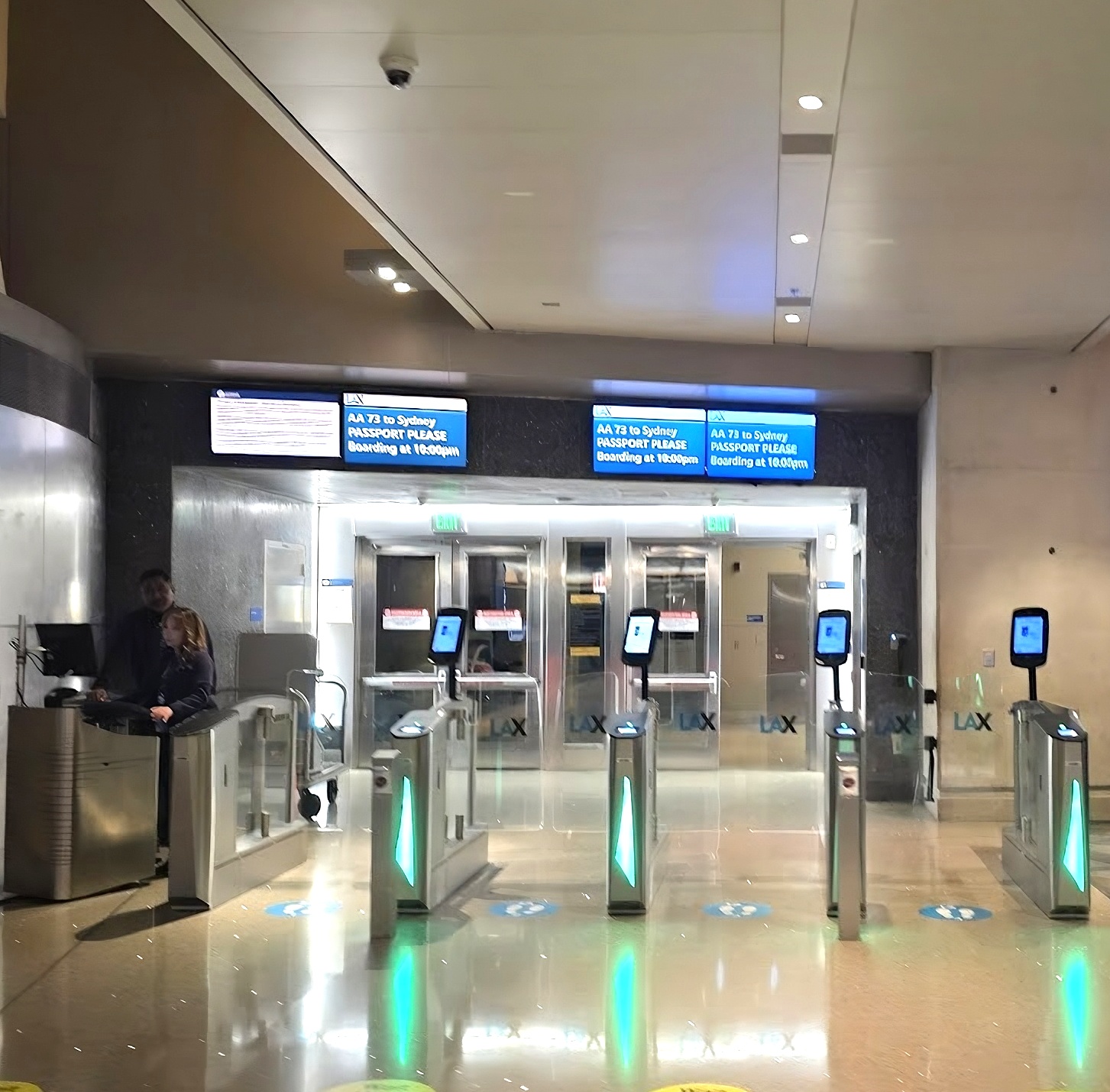
Mattress Pads Coming To All Long Haul Flights
American Airlines restored pajamas to ultra-long haul flights in business class this summer and added mattress pads to these flights. Customers love things that make them more comfortable, and the mattress pads make a real difference for the seats. (Without one I’ll use the blanket as a mattress pad, the pad is more important to me than being covered.)
Chief Customer Officer Heather Garboden says that they’re ‘looking at’ expanding mattress pads. She wouldn’t be saying this in such a public setting (American Airlines Group has over 130,000 employees) if this wasn’t close to ‘finally but not quite announced’ yet.
[W]e have extended our mattress pads to business class on all of our ultra long haul flights. And we’re also looking at doing that. for our other long-haul flights as well. So stay tuned for more there.
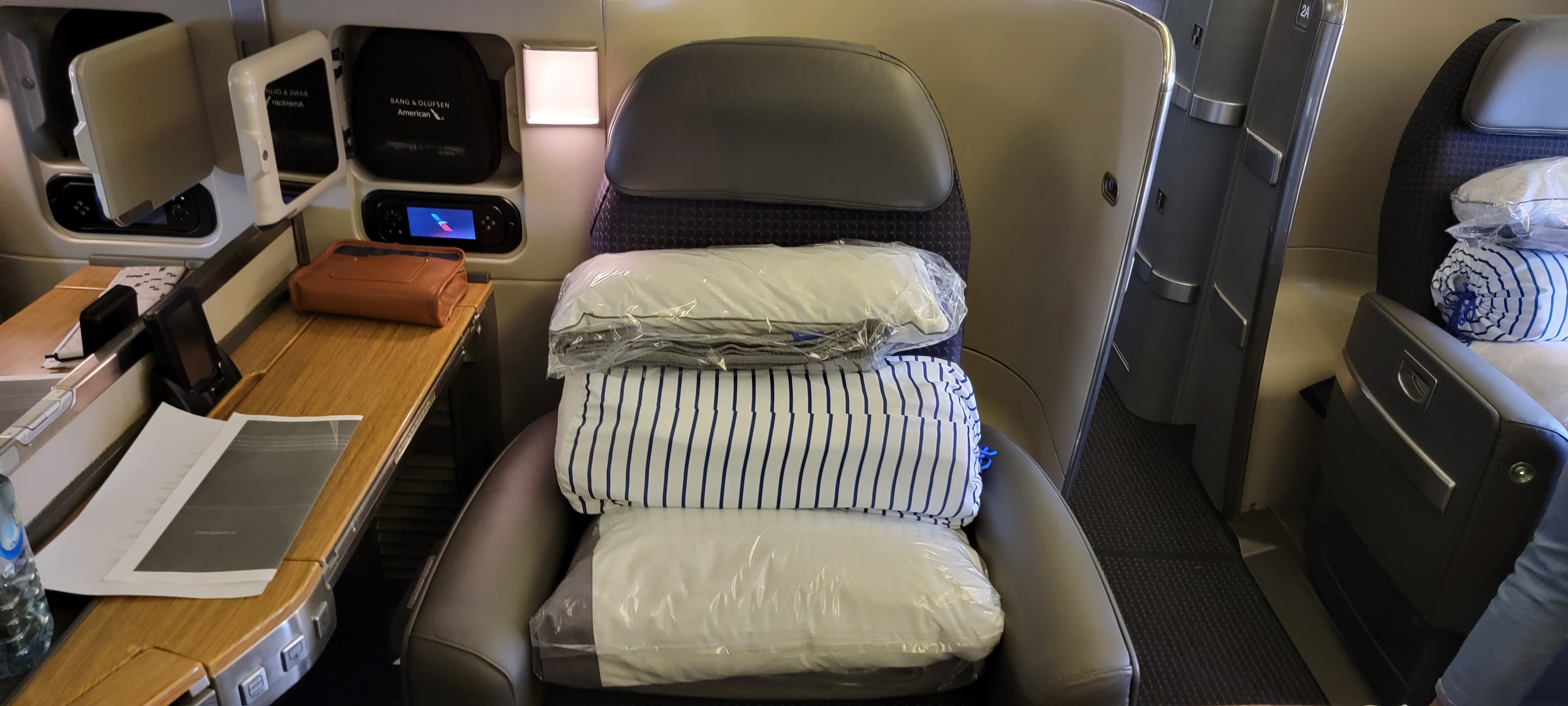
American Airlines Bedding In First Class
New Planes Coming, Old Ones Will Be Made Like New
American Airlines took delivery of a new Embraer, and was able to get regulatory approval for the interiors of the Airbus A321XLR, despite the government shutdown. The XLR is much cheaper to operate than a widebody aircraft. It will go on premium cross-country routes first, but will also fly transatlantic.
It won’t have as many seats as a Boeing 777 or 787, and will have higher seat costs despite the lower trip costs. They don’t need to sell as many tickets, but they do need to sell premium tickets. So the plane is configured with:
- 20 business class suites
- 12 premium economy seats
- 123 coach seats
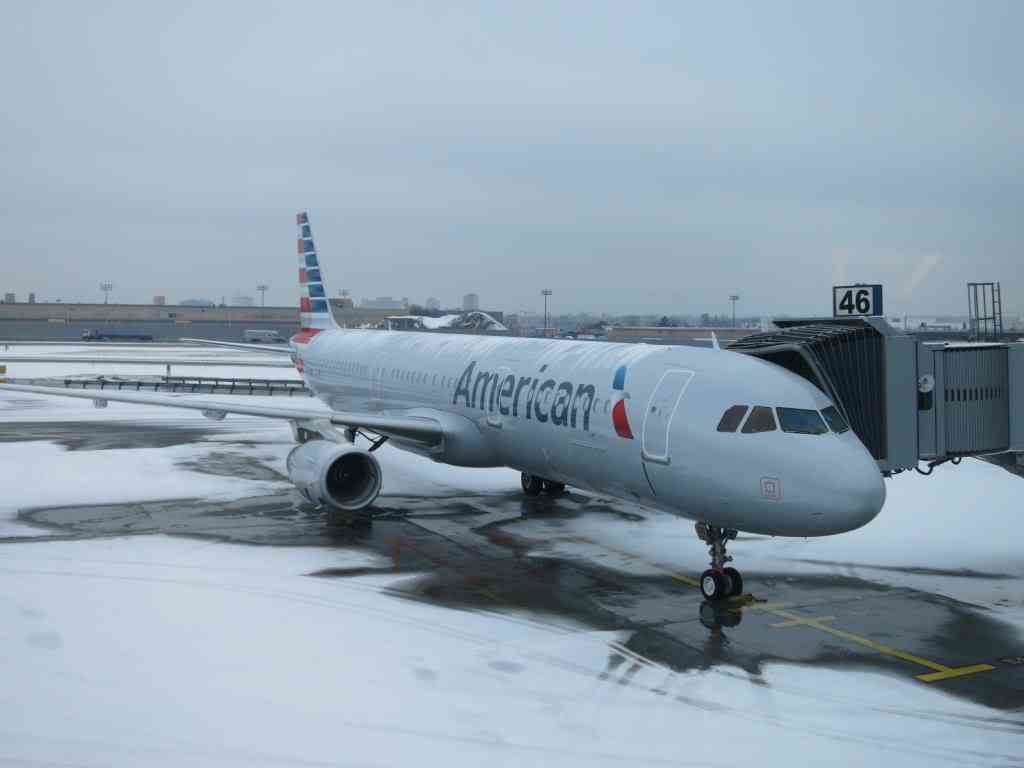
American Airlines Airbus A321
As Senior Vice President Meghan Montana shared (by the way, that’s just a great name):
We will be the first U.S. airline to operate that airplane, and we will be the first global airline to operate the three-cabin configuration. So we’re super excited about that. The narrow-body economics and the ability to fly internationally makes it a really nimble addition to the fleet.
For 2025, American will have taken delivery of:
- 22 Boeing 737 MAXs
- 1 Airbus A321neo
- 12 Embraer E-175s
Plus, I believe half a dozen Boeing 787-9Ps. And they’re retrofitting planes with new interiors. Next year the delayed retrofit of the Boeing 777-300ERs will take off. That means new business suites on those planes (but no first class).
And they announced during the earnings call something that I had earlier reported, that they’ll retrofit Boeing 777-200ERs:
- Business class suites
- New premium economy (much nicer than the current product)
- Refreshed coach cabin (the seats are attractive-looking)
- ViaSat wifi (huge upgrade over the current product)
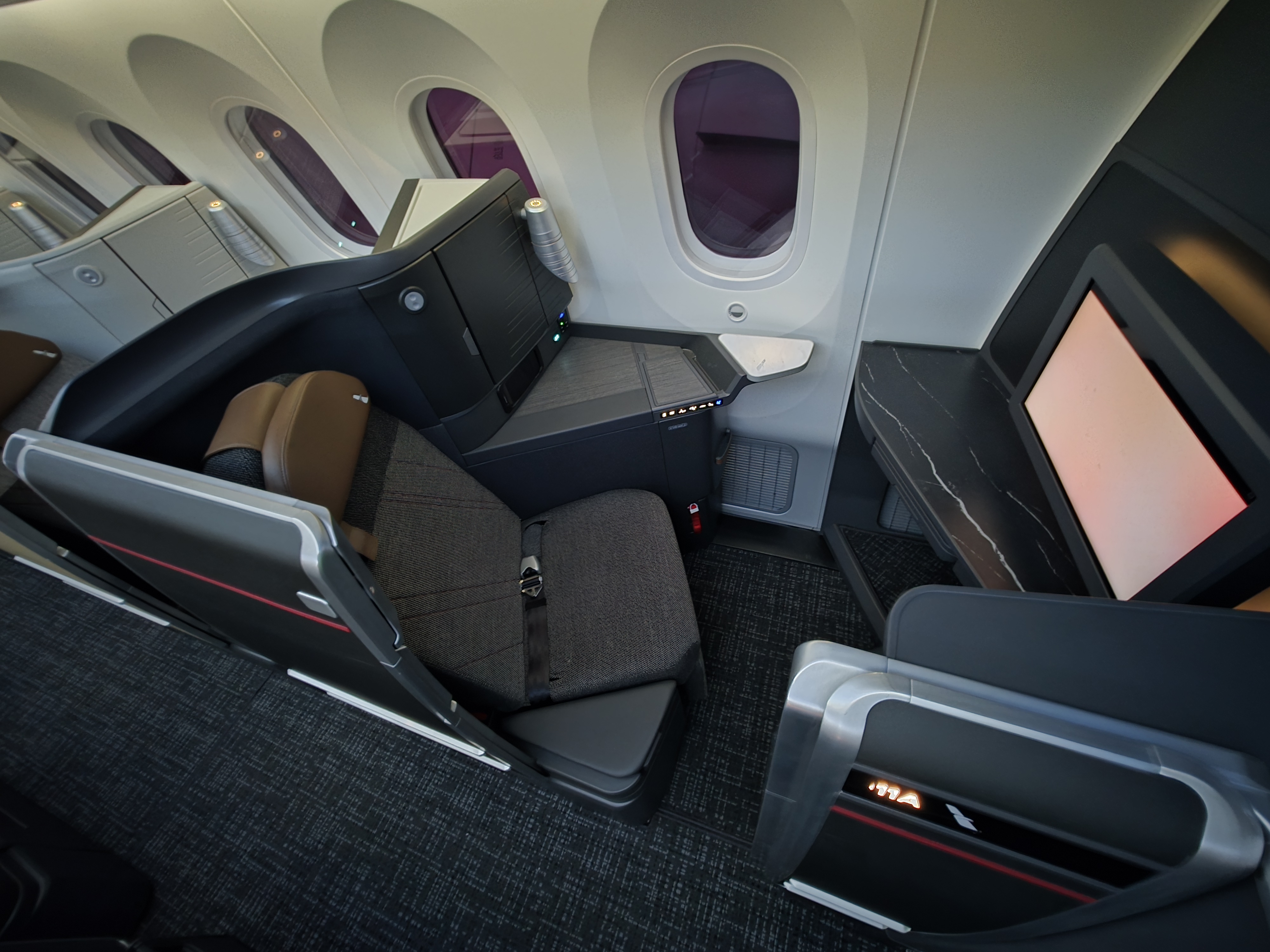
American is retrofitting large regional jets with Intelsat wifi – for years I’ve avoided flying American’s regional jets when possible because the air-to-ground Gogo was practically unusable, and that meant flight time was less productive time. But this will be ready in time for free wifi starting next year. And the interiors of these planes are getting updates, too.
While we’re at it, we’re refreshing the interiors, we’re swapping out seats, we’re adding new larger overhead bin storage. Again, all in the effort of improving the onboard experience.
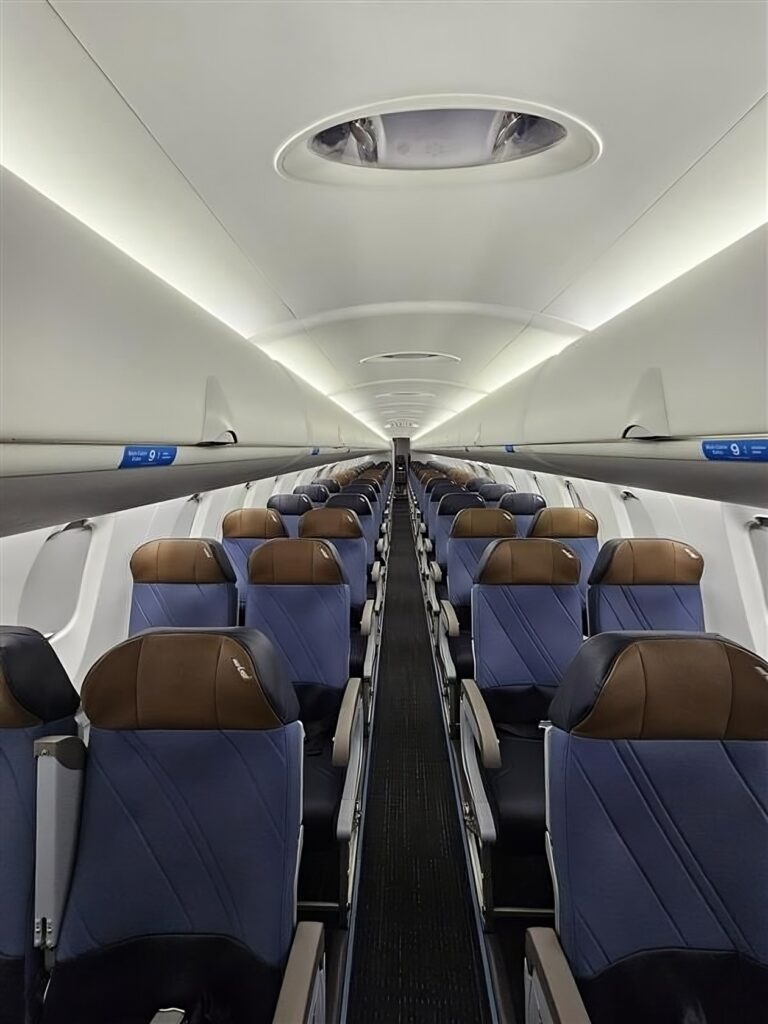
Here’s the piece that I find most important in all of this: I’ve been saying we’ll know American Airlines is serious about premium investment when it moves beyond small wins in policy changes like easier standby and not taking away business class headphones an hour prior to landing and commits real dollars to the effort.
Montana laid out the financial implications for American’s capital budget. They’re spending more money. I still also need to see Robert Isom on the front line laying out the strategy and explaining to employees the vision for the airline, and what kind of service that means (and how that benefits front line staff in profit sharing). But this is a start:
I am a finance person, though, so I’m going to talk about what that means for capital expenditures. We are investing about $3.8 billion this year, which is a mix of those new deliveries and the retrofit programs. And we’re going to continue to invest next year and beyond, also in lounges and the customer experience. So from 2026 onward, we expect CapEx to be anywhere from about $4 to $4.5 billion as we go forward. So, yeah, exciting stuff.
It’s not an extra billion a year in capital spend, but it’s a start. As I’ve explained, retrofitting the Boeing 777-200s actually saves capital spending, and Montana lays this out too – but it’s still headed up and to the right.
[T]he big reason we do it from a finance perspective is it allows us to delay having to replace those planes. And so practically what that means is we will delay or push out $7 to $9 billion of replacement costs through the end of the decade, so we can reinvest in other parts of the fleet and the customer experience and lounges and other things that are going to make sure we’re positioned to win. So it also de-risks our reliance on the OEMs and is a really cost-effective way to enhance the product.
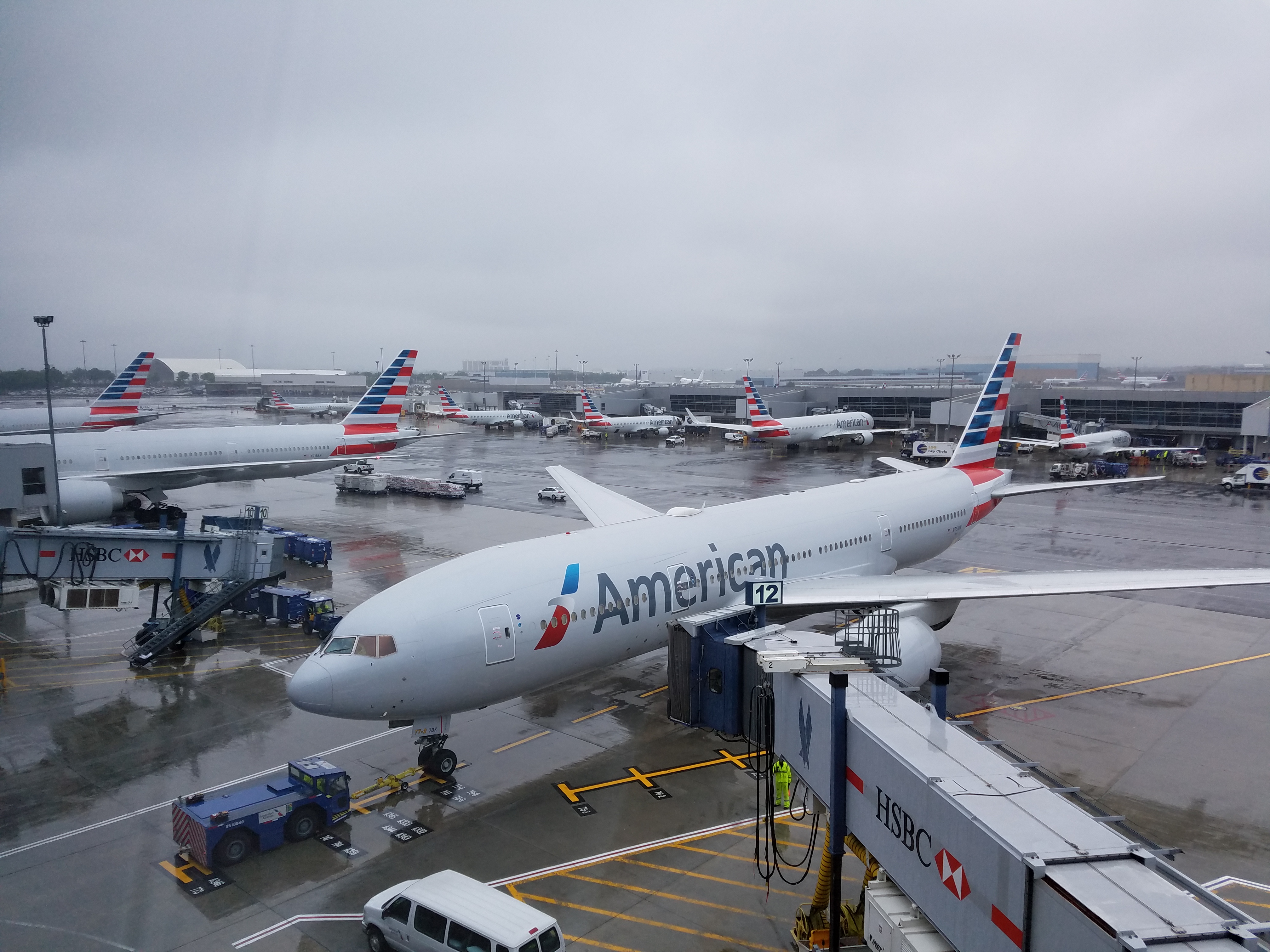
Changes To Route Network
American describes the new premium-heavy Boeing 787-9P as the “most profitable widebody in the system.” It has 51 business class suites, not just 30 as on earlier versions of the plane. It’s going on routes where they think they can sell a lot of business class. They say they’re filling those seats “at fares that are really great.”
Adding these planes frees up aircraft for other new routes and together they’re excited about adding,
DFW to Zurich, Philadelphia to Prague, Philadelphia to Budapest. We have a number of new routes coming. Some will be on the P, they’ll be mostly focused on Heathrow, but by putting those airplanes in Heathrow, we free up standard configured 789s to go to these new destinations next year.
Then moving on to the XLR, having that first airplane now outselling in JFK LA, you can go buy tickets on it in the front cabin, premium economy. And then we’ll have more of those airplanes coming in over time, and they’ll be deployed in transcon to start as well.
And I’ve said this in this venue before, but just to remind everybody, the XLRs will be first deployed on our transcon flying between JFK, LA, San Francisco, Boston, LA, and Orange County. And once we fill out all of those routes and replace the 321Ts that are in those markets with XLRs, then we’ll start pushing the XLRs transatlantic.
Next year the Airbus A321XLR replaces the A321Ts flying premium cross country routes. But they “will have one transatlantic route on the XLR.” (That’s been subsequently revealed as seasonal New York JFK – Edinburgh.) Then transatlantic will ramp up when “2027 rolls around and we have between a half dozen and ten XLRs to deploy in transatlantic flying.” And that means that a year from now they will have:
a bunch of new long-haul routes announced, transatlantic, transpacific, We’ve got 78Ps coming in. We’ve got XLRs coming in. So we just can’t wait in network planning to share all of our ideas with you when we get to about this time next year. So look forward to that.
Ameircan Airlines will add transpacific routes! American still has challenges, but they also still have revenue coming in and should make (some) money in 2025 so there’s still a window to make the investments necessary to get the airline on the right track.
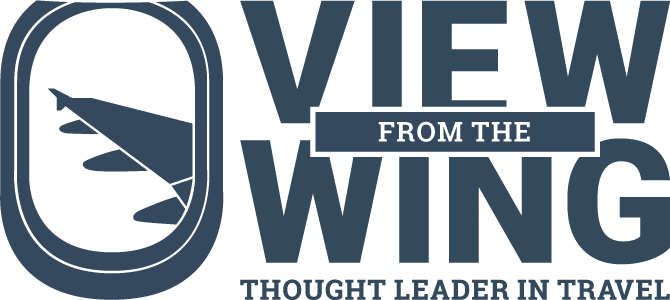

With Miami now using facial recognition for passengers on incoming international flights, is there any real benefit to Global Entry? I only connect through Miami and had GE to avoid the stockyard that MIA immigration is, my departure airport is Tampa and it rarely has any long lines at TSA.
So is GE even worth it in my case?
‘Pivot to premium’… is so back!
In all seriousness, I’m genuinely excited about the new Flagship Suites.
They have to make coach better. They have no entertainment systems, while other carriers do. And American doesn’t even have for-purchase food in coach on many flights. As far as carry-on goes, they need to stop people who bring on multiple big bags.
Maybe if they didn’t screw over their loyalty members things would be different
Think there’s any chance they add more J seats back to 787-8s? 20 just isn’t enough…at least on many of the ORD routes I’ve taken recently.
Thanks for this, the ‘table stakes’ and the focus on the premium pivot. It’s important.
1) JFK-EDI makes complete sense for the XLR – might even look to fly it next year, although probably will connect through LHR to head closer to Inverness. Will take a look at the November 3 launch booking deals and decide. Need more of these types of routes.
2) JFK-LAX does not make sense for the XLR – either the plane or the LOPA. Selling less premium seats than the 321T (10 first/20 business – now 20 business, 12 PE). If folks wanted to fly domestic first / PE to LAX, they already have that option in the market. Lack of MCE seats on XLR and 787-P is loyalty killing for so many reasons (36 MCE seats on the T now 12 on the XLR and only exit row – yikes), just incredibly stupid. Could have had UA’s LOPA with 5 less economy seats but plenty of extra legroom seating. Insane.
3) It’s good to see capital expenditures, and tend to agree the plan is pretty much “let’s make things look new and restore service cuts”. That’s better than nothing of course, but as you noted earlier, UA/B6 is the logical tie up plus B6 is going to have lounges and domestic first flying from JFK within a year. So AA can be rightfully pissed about the NEA collapsing, but NYC is about to become a battlefield for AA loyalty. With MCE the most reliable loyalty perk, why on earth did they design a plane that doesn’t have any. It makes no sense.
4) @1990 – hill to die on much? I for one welcome our new legroom overlords.
Nothing like the CEO and CFO making conflicting statements when explaining prepared comments on earnings to employees.
Isom probably has his marketing dept working on another PowerPoint slide defending his $31M+ comp package versus his outperforming peers at Delta and United.
The airline seems to be doing better. More pre departure drinks (other than late catering which is always an issue at hubs), smoother boarding and maybe a bit better at operational recovery.
One issue I still see is too short turns, one hour or less from domestic flights. Unless the inbound is early turning a 738/321 around in 50-55 minutes is near impossible unless the inbound or the outbound is very light.
A number of the lounges need to be expanded if room exists.
What is a “low haul: flight?
“Leaked American Airlines Employee Briefing” Does anyone even follow NDAs anymore?
@Peter — Keep drilling the MCE point. I’ll keep tooting the US-261 horn.
In addition to being a laughably incompetent manager, Isom also continuously reveals himself to be an insufferable caterwauling complainer (often overlooked due to his gross incompetence).
Nice summary. Nothing really new here EXCEPT the Transpacific as mentioned. That should start some speculation!
Can we get some transcon XLRs to PHL? We still feel like the red-headed step child when it comes to domestic flights.
I’ve found that one big carry on problem is that AA no longer uses the carry on sizer boxes at the gate. They just beg or demand that carry ons to be gate checked. I just flew AA and saw this in real time. One guy carried on two full sized bags which took up his entire row’s overhead carry on bin. The gate agent didn’t even question the size of his bags when he boarded.
Someone needs to tell Isom that being on time and providing good customer service at all points of contact are mere tables stakes in the airline industry. IMHO, this is one big reason for AA’s decline. Running on time is fine, but if the rest of the experience isn’t good, customers will go elsewhere.
Not conducting a “live” Q&A at the employee meetings is yet another shining example of how backwoods and incompetent AA Senior Management is. In the long-gone days when American was a top worldwide airline, Bob Crandall – even in the “down” times – never ducked an employee question. He had a unique knack for breaking down very complex issues into simple straightforward language that the employees understood. The emphasis was always on “employees” who these meetings are supposedly for. What was thrown out is a rehash of a bunch of smoke and mirrors they are trying to peddle to Wall Street who, thus far, seem to be buying into it. Isom and his-Suite are the epitome of “bunker executives” and the disastrous condition of the airline directly reflects it.
@Gary,
How about a glossary? What are “MCE seats”, “LOPA”, “US-261”??
@TW — That’s a phenomenal point. It’s not just AA; many major corporations and their management fear their own employees (and consumers). They only want to ‘hear good things’ and never be challenged. And, if you do stand-up for yourself or express any solidarity, you’re ‘out’ (which is technically ‘retaliation,’ but, ya know, others think that’s just you being ‘disloyalty,’ or ‘communism,’ or some other red-herring.) At some point, the wealth and income inequities are going to catch up to these folks who have forgotten that we’re all both human and mortal. Couldn’t have said it better than “bunker executives.” 100%.
@Wiley Dog — I gochu, bro.
MCE: American Airlines’ Main Economy Extra seats (extra legroom in Economy cabin).
LOPA: Layout of Passenger Accommodation
US-261: My own; EU-261 is an air passenger rights legislation; I wish we had one in the USA.
I remember an episode of Hogan’s Heroes where Hogan had to select one of two wires on a bomb to cut. He asked Klink which to cut and saved everybody by cutting the other one. Thus, we have a lesson in airline management. Wondering what to do? Think of what AA would do and do the opposite.
@This comes to mind — “I see nothing!”
Do they really think that adding a “label” champagne and a marquis brand coffee is going to bring people back after all of damage that Doug did?? sometimes the hold you dig is just too deep to be refilled
i have been in the program since Day 1 and have logged >10MM miles and i am done…i refuse to spend money on an inferior product (i won’t get on a DL 767 Either).
i tried AF, EK and DK (selectively), liked them and never looked back – and a good champagne is not going to do the trick
Since lying is part of the airline culture, I wonder what part is lying and what part may be true.
*kelleher
The hard product investments are nice to hear, but there is a glaring gap in AA’s pivot to premium. I heard no talk of investments in cultural realignment and service excellence training. When DL and UA made their pivots they focused hard on culture and retraining.
As long as AA leaves their employees to act a fool on the regular nothing else really matters.
@Parker — Crews outta NYC have been fine by me; just need a newer aircraft for transcon, and these new Flagship Suites should hit the spot. Come to think of it, I’ve taken AA to MCO and AVL, recently, and even got PDBs! Things are lookin’ up… *wink*
I flew a 737 max last night in coach and it was hands down the tightest seating of any mainline carrier. Horrible experience.
“Refreshed coach cabin (the seats are attractive-looking)”
I’d rather sit in a stunningly ugly seat that’s roomy and comfortable than one that looks great but is narrow and lacks legroom.
New transatlantic and transpacific route possibilities for 2027 (mostly random guesses that won’t happen)
Transatlantic:
JFK-RAK
PHL-CMN
MIA-RAK
JFK-LIS
PHL and/or JFK-OPO
JFK-Sevilla
JFK-Ibiza
JFK-NCE
JFK-AMS
JFK-VCE
JFK-ZRH
ORD-WAW
PHL-VIE
PHL-Germany
PHL-HEL
PHL-OSL
PHL-ARN
Transpacific/ultra long hauls:
PHL-TYO
MIA-TYO
PHX-TYO
ORD-TYO
LAX-ICN
LAX-HKG
LAX-KIX
DFW-KIX
LAX-KUL (longshot, Malaysian Airlines hub)
JFK-KIX (longshot)
ORD-KIX (longshot)
JFK-BOM
MIA-JNB/CPT
LAX-MEL
@Alex — I-M-A-G-I-N-A-T-I-O-N….
A bit like ‘too little too late’ for me
I’m a NYC flier – in addition to their many challenges, they have a threadbare route network here (and shrinking in important markets like CH & LA)…
So I moved my $$ (and my tush) to DL. I hate SkyPesos – but Delta does in fact run a better airline
Just like other woke airlines – American is the same – with their DEI hiring practices, top heavy management – and NOT if you can DO the job – but WHO you know to get the job – there are many working at their HQ and why this airline is failing its long time employees by hiring based on more DEI protocols. This airline, like others, gave up on dress code for passengers, so it’s not uncommon to see people boarding who look like they just got out of bed in their PJs, or slippers on. Airlines used to have a certain form of decorum, and not sure when this trend began going downhill – because traveling was a privilege and not a right – but I digress…and why I believe there are more fights aboard airlines, because decorum and decency went out the window all for the almighty $$$, and couple that with cramming seats closer together just to squeeze more people into what I refer to as a cigar-tube. These are now nothing more than flying buses.
Like other woke airlines – American is the same – with their DEI hiring practices, top heavy management – and NOT if you can DO the job – but WHO you know to get the job – there are many working at their HQ and why this airline is failing its long time employees by hiring based on more DEI protocols. This airline, like others, gave up on dress code for passengers, so it’s not uncommon to see people boarding who look like they just got out of bed in their PJs, or slippers on. Airlines used to have a certain form of decorum, and not sure when this trend began going downhill – because traveling was a privilege and not a right – but I digress…and why I believe there are more fights aboard airlines, because decorum and decency went out the window all for the almighty $$$, and couple that with cramming seats closer together just to squeeze more people into what I refer to as a cigar-tube. These are now nothing more than flying buses.
Sure, let’s improve the product. But not the service! Minimum crews to be overworked! Increase crew size back to pre- covid levels!
We won’t be flying any single aisle long haul flights in economy because the bathrooms are blocked by carts during service. Hardly a customer focused layout.
Here is an idea to make more revenue. Resume food for purchase in coach! And provision flights with more than 12 fruit and cheese trays.
@Worldlyt how much time do you need in an airplane bathroom on a 7+ hour flight.
Go before you board and and then after the meal service if you really need to go that much
Missed opportunity to implement Starlink.
More transpacific routes would be great!